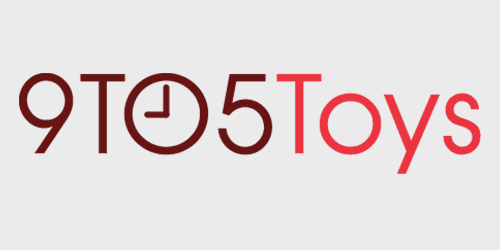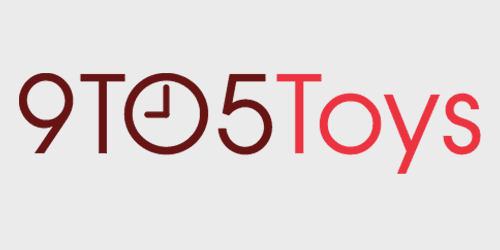
Huawei has proven it is a very capable company when it comes to smartphones, but few of the company’s other products have ever taken off. Its tablets have never been super popular, and its first Windows device, the Huawei Matebook, wasn’t exactly impressive.
I can honestly say that when it came to a Windows machine, Huawei was the last place I expected to find something I could enjoy using day to day. That is, until Huawei announced its second generation of Windows devices. Over the past month I’ve been using the “flagship” of that collection, the Huawei Matebook X, and it’s been one of the best Windows experiences I’ve ever had…
Hardware & Display
The Huawei Matebook X is an ultrabook in every sense of the word. It’s a super thin machine at just 12.5mm thick and very compact as well at 286mm wide. Despite the size, the Matebook X still offers up powerful Intel chipsets, a respectable battery, and a full-size 13-inch display and keyboard.
That all comes wrapped in an all-aluminum body that looks just as premium as it feels. Visually it’s very similar to Apple’s 12-inch MacBook, but that all changes when you actually open up the machine.
Lots of Screen in a Compact Package
Inside you’re greeted with Huawei’s 13-inch display that has extremely minimal bezels. Most premium Windows laptops today ditch the bezels in one way or another. The Dell XPS line does so by cutting them off around the sides and placing everything at the bottom. My personal HP Spectre 13 trims down the sides and keeps the top and bottom to a respectable size. Huawei, on the other hand, cuts down all of the bezels to just 4.4mm. It’s visually stunning and really maximizes your workspace without making the machine itself any larger.

At 2160 x 1440, the Matebook X’s display is also top notch. The IPS panel is covered in Gorilla Glass and offers up excellent, accurate colors with a top brightness of 350 nits. That’s not especially impressive, but it’s enough for the majority of situations you’ll be using the Matebook. The 3:2 aspect ratio is a little weird if you’re used to the typical 16:9, but it really comes in handy when browsing the web.
The interior of the Matebook X is also crafted of the same aluminum as the outside with the colors matching up. It’s a pretty standard layout with speakers up above the keyboard and a fair-sized trackpad directly below. The best little addition to the interior, though, is the fingerprint sensor integrated into the power button. It’s very quick and accurate, and I love that a single tap both turns the machine on and unlocks it via Windows Hello.

The Matebook X also weighs in at just 2.3-lbs making it very nice for traveling when combined with that 12.5mm thickness. With the slim profile, though, comes a lack of ports. To be specific, full-size USB ports. I’m always a bit disappointed to see those sacrificed for the sake of being thin, but I didn’t miss them all that much with the Matebook X, but we’ll get to that a bit more later on.
Software and Performance |
Like I’ve mentioned, the Huawei Matebook X ships with Windows 10. As per usual, that means you’ve got a pretty standard, easy to use, and enjoyable experience. It’s nothing macOS fans will enjoy, but if you’re sold on Windows and want something comparable to the 12-inch Macbook, this is it.

Bloatware is very minimal on the Matebook. It essentially boils down to Huawei’s Matebook Manager, a software suite full of customizations for the laptop to help out with boosting battery life and performance as much as possible. Dolby’s software-based audio enhancer is also included. As someone who has used a lot of Windows machines with bloatware at every turn, the Matebook X is a nice balance between adding extra value and keeping a clean experience.
Even the Base Model is Very Capable
As far as performance is concerned, I was very happy with the X. My personal desktop PC runs on an i5, 16GB of RAM, and a GTX 1060 while my personal laptop, the HP Spectre x360 13, runs atop of a Core i7 and 16GB of RAM. Those both provide me with plenty of power for day-to-day tasks, but I was a bit worried to use the Matebook X with just an i5 and 8GB of storage.
Thankfully, this machine flies. Boot-up time was very quick and everything I threw at the computer was handled without much trouble. The only time I really encountered issues was when using a couple dozen Chrome tabs at once.
Battery Life & Ports |
As with most ultrabooks, the Matebook X is also pretty solid when it comes to battery life. The embedded 41.4 Wh battery which can easily last a full day if you use it right. Cranking up the brightness or using intensive programs will drag it down, but I could easily get through a standard workday’s worth of typing notes in Word without dipping below 25%.

My daily workflow is a bit more intensive with quite a lot of Chrome tabs and Slack conversations ongoing, but it’s still not hard to get through the majority of a day without running out of juice. Luckily, recharging is pretty easy with USB-C and the included power brick.
Adapter
Along with most laptops on the market today, Huawei has wisely adopted USB-C on the Matebook X. On either side of the machine you’ll find a USB-C port which is capable of data transfer and video output. As mentioned previously, there’s no full-size USB ports, but Huawei does include an adapter in the box which offers up USB-C pass through, a full-size USB port, HDMI, and VGA.

Why Can’t I Charge With Both Ports?
The only major flaw with USB-C on the Matebook X involves charging. Only the left-side USB-C port on the Matebook will accept a charge. To be frank, that’s really annoying. Being able to plug in on the most convenient side of the machine is one of those small things that really completes the experience on machines like this, and it’s one of the many perks of USB-C. It’s a shame really.
Keyboard & Trackpad |
The Matebook X isn’t a laptop first and a tablet second, it’s just a laptop, with a keyboard and trackpad as the only methods of input. Thankfully, both are very good. The trackpad on the Matebook X is tactile and responsive, and it’s one of the better trackpads I’ve used in the past several years.

The keyboard, on the other hand, is a bit of a mixed bag. The keys are well spaced and the backlighting is wonderful, but the keys themselves lack satisfying travel. It’s easy to see why with such a thin machine, but typing on the Matebook sometimes feels almost painful due to the lack of key travel, mainly when typing for very long periods of time. It’s not a deal-breaker for me, and it’s definitely something most users could get used to, but better key travel would definitely have been appreciated.

Audio |
Audio on thin laptops isn’t usually impressive, but through a combination of pretty decent speakers in general and some impressive software tweaks, Huawei has been able to create a surprisingly good audio experience on the X. Bass leaves a little room to be desired, but they speakers are loud, clear, and definitely won’t disappoint. There is also a 3.5mm headphone jack on the side for when you need that, but streaming audio through Bluetooth works just fine too.
Final Thoughts |
When it comes down to it, the Matebook X is a very solid Windows 10 laptop. It’s not perfect, of course, but it’s very good across the board. This isn’t a machine for video editors, but it’s an ideal piece of hardware for writing and general computing. It’s also one of the few ultrabooks I can say is well worth the asking price without hesitation, especially the upgraded model.

Pricing
As with any ultrabook, the Matebook X asks a pretty hefty price. The model I reviewed with a Core i5 processor, 8GB of RAM, and a 256GB asks $1,099 in the US. Upgrading the processor to a Core i7 and the storage to 512GB ups that to $1,299. That sounds like quite a bit, but it’s honestly a pretty good deal if you ask me. Compared to Microsoft’s new Surface Laptop, the Matebook X is a serious competitor that undercuts on price significantly.
FTC: We use income earning auto affiliate links. More.





Comments